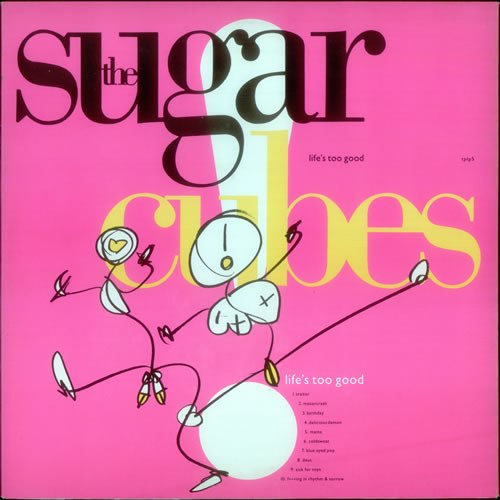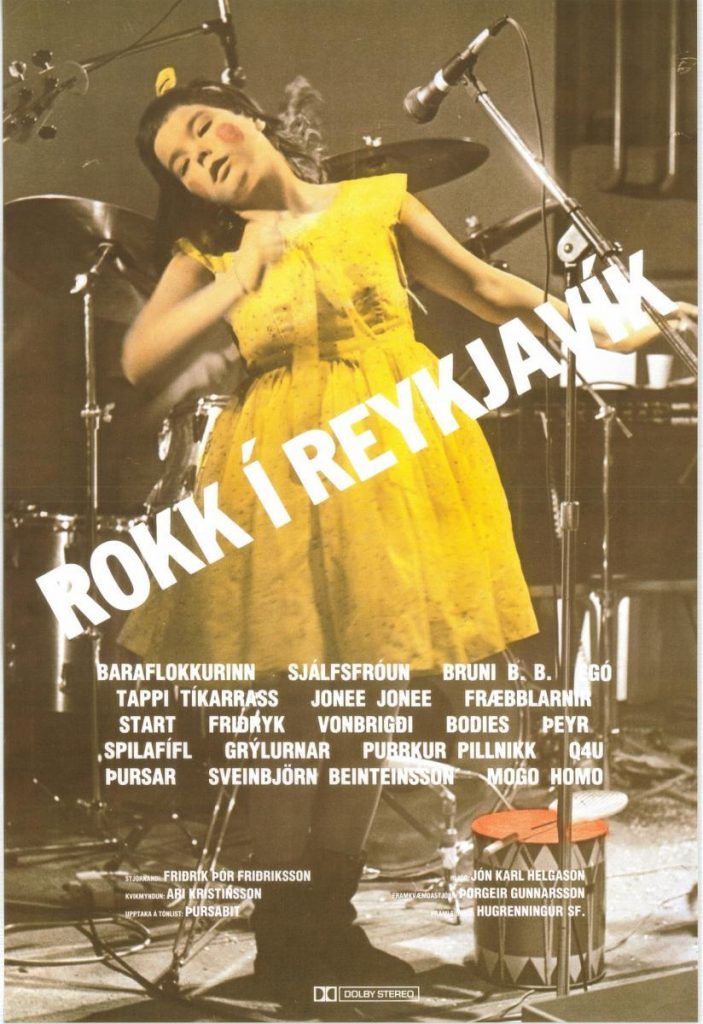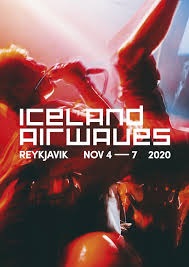Past, present and future of the Icelandic music scene, according to Sigtryggur Baldursson

He was a pioneer in the development of the Icelandic music scene in the 1980s, for instance as a drummer for the illustrious Sugarcubes. Now he offers Icelandic music a stage, being managing director at IcelandMusic. A conversation with the colourful Sigtryggur “Siggi” Baldursson, the musical link between Iceland’s past, present and future.

I proudly show him my pink copy of the Sugarcubes debut “Life’s too good” from 1988. With their playful cheerfulness, the interest for music from the then-unknown, distant island started. But the scene started earlier and Sigi talks about it with great enthusiasm. “The jazz-funk band Mezzoforte was already successful in 1983. That was mainly in the UK. But the Sugarcubes went worldwide.” How does such a success occur suddenly? Was there already a breeding ground in Reykjavik? “The 1982 documentary ”Rokk í Reykjavík“ shows how different bands emerged in the alternative circuit, gigged with each other and inspired each other.” Parts of this documentary is available on YouTube. The Sugarcubes arose from bands that had already made their mark in Iceland. “I came from Þeyr, a new wave band. Einar was from Purrkur Pillnikk, a punk band, and Björk was in Tappi Tíkarrass before. The three of us met in 1983 in the band Kukl, with Einar Melax, Birgir Mogensen and Guðlaugur Óttarsson. ”

Kukl retired in 1986 and the trio, along with others, immediately restarted as The Sugarcubes. “We were founded as a tongue-in-cheek pop band for the art collective and record label Smekkleysa / Bad Taste. It also included people from the literature scene. The manifesto said that there should be a pop band that would generate money for the entire collective.” So it became the Sugarcubes… And they dragged in a lot of money. Siggi chuckles. “Yes, we were in the right place at the right time. And our singer, Einar Örn, had many contacts in London, where he studied.” After three albums, the band quit in 1992. “We were a democratic band and everything we made, we made it together. Björk had specific creative ideas and needed a different environment to implement them. ”

The Sugarcubes paved the way for other Icelandic bands and artists, such as the electronics of GusGus, the indie of Múm, the post-rock of Sigur Rós and of course for true artist Björk herself. Everyone has their own unique niche. “It seems we are good at that.” Siggi looks at his Swedish friends with a wink: “They make pop hits for American pop stars; we make interesting indie music. Icelanders have always been strong in creating their own style in all parts of art.” This is also the case in music, which has now grown mainly in breadth. “We have metal like Une Misere, that does well, but also classical composers, such as Anna Thorvald. That’s healthy. And there is still room for creativity. ”
Siggi has been with IcelandMusic since 2012 and exports Icelandic music. “We don’t sell records, however. The artists and bands make music in their own way, in their own style and direction; we try to offer them a platform.” There is no general formula for success, “but two things must be in order: the music must be interesting and the connections must be good. A good spot for that is Iceland Airwaves, the annual showcase festival for Icelandic bands in particular.”

According to Siggi, Icelandic music is doing well abroad, especially in the United States, Germany and the UK. The Netherlands and Belgium are also interesting. He especially knows the Netherlands quite well. “I lived there from 2000 to 2003, in Hilversum.” He was, of course, curious about the popular Dutch artists and came to develop what he called the “Local Hero Syndrome”. “I later tested it in other countries and realized that the most popular national acts are usually not a good export item. They come from a universal, global trend, which they translate to local conditions. For example, rap is known worldwide, but each country has its own rap artists. They rap in their own language about things in their own country. That fascinates me enormously. ”
In this extension, it fascinates me whether there is such a thing as “typical Icelandic music” … Siggi is surprisingly clear: “No, it is the personality, not the country. Icelandic musicians do have a certain personality, linked to our culture. They do their own thing within the general trends. That is why they are a good export product.” I try a counter-argument: “But when I hear Sigur Rós, I immediately think of Iceland and see the country ahead of me.” But Siggi skillfully contradicts: “That is not typically Icelandic, but typically Sigur Rós. Their music is mystical and cinematic and they know how to convey that feeling very well in both their music and their videos. It has become their trademark: the mystical Icelandic band.” I was already convinced, but he adds an example about Björk, who else…: “Many people have that Iceland feeling with her too. But it’s more of a listener’s perception than a typical Icelandic sound. ” I can’t resist: “But can Björk just as well be Dutch or German?” Sigi thinks for a long time, but is very sure: “No, she is very Icelandic.” Because? “She has a strong connection with nature, like many Icelanders.” He visibly leans back satisfied.

It was indeed a very pleasant conversation, with a colourful and open personality. All the more I regret a question that I should have asked him as a person, but that clearly embarrassed him in his role for IcelandMusic: “Which Icelandic bands should we pay attention to in the coming years?” “Well, like you’re asking me to name two of my eighteen children …” He can’t choose, a problem of conscience. Nice as he is, he asks reflection time. A few days later he sends me a very neat list of names, lots of names. But I cannot choose either, and may not choose either.
To this appendix: The future of Icelandic music – part 1 … And it looks sunny:
Indie pop urban and rock: Ásgeir, GDRN, Kælan Mikla, Berndsen, Cell7, CYBER, Einar Indra, Gyda Valtys, JFDR, Hatari, HILDUR, Hugar, Mammút, Mighty Bear, Olof Arnalds, Pétur Ben, SiGRÚN, Stafrænn Hákon, Sycamore Tree, Teitur Magnússon, Una Stef, VICKY, Audur;
Post-classical: Snorri Hallgrímsson, S-Hel, Gabriel Olafsson, Olafur Arnalds;
More in the folky style: Hafdis Huld, Svavar knútur, Ylja, Snorri Helgason, Hera Hjartardóttir, Bára Grímsdóttir.




